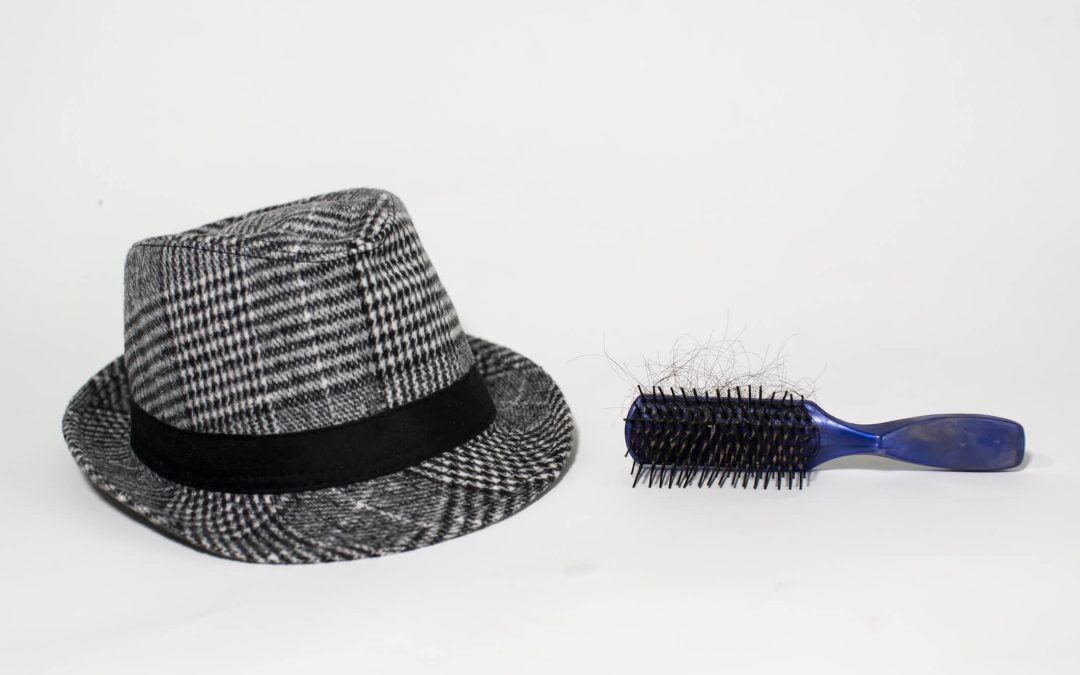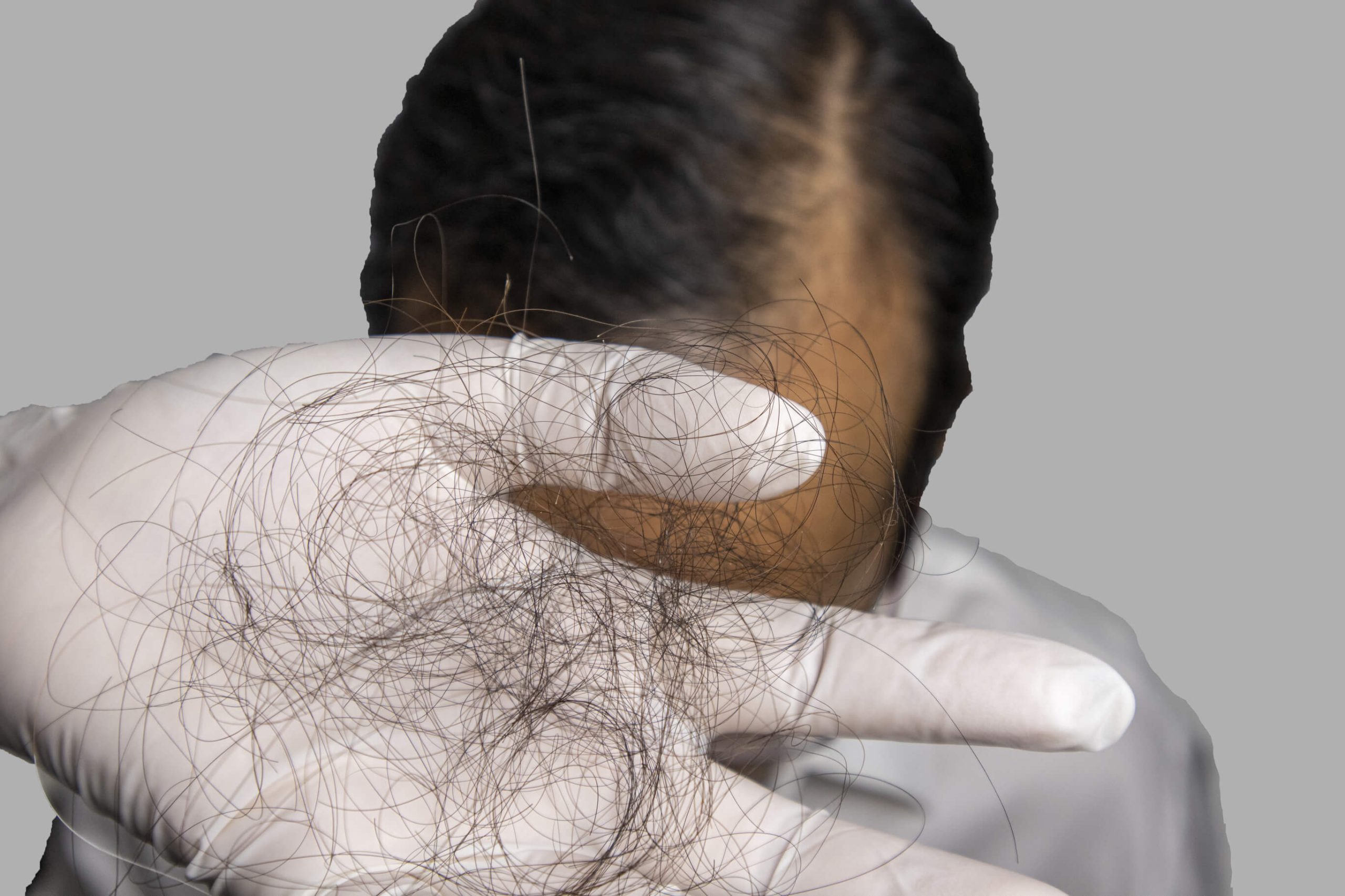The idea that wearing hats can lead to hair loss has been a common belief for years. For many, hats are a part of daily life for style, protection from the sun, or warmth. But is there any truth to the claim that wearing them regularly can cause your hair to thin or fall out? In this article, we’ll explore the science behind hair loss, debunk myths surrounding hats, and provide expert insights on whether your favorite accessory poses any real threat to your hair health.
The Scientific Basis of Hair Loss
Alopecia, or hair loss, can occur for a variety of reasons, the majority of which are not related to external factors such as headwear. Hair loss is primarily caused by:
- Genetics: Most hair loss cases are caused by hereditary androgenetic alopecia, also called male and female pattern baldness.
- Hormonal fluctuations: Temporary hair loss or thinning may result from thyroid disorders, pregnancy, or menopause.
- Medical conditions: Hair loss may be caused by autoimmune diseases, scalp infections, or disorders such as alopecia areata.
- Lifestyle factors: hair growth can also be influenced by stress, poor nutrition, and specific medications.
The Origin of the Hat Myth
The notion that donning hats results in hair loss is likely a result of apprehensions regarding traction alopecia, a condition in which hair follicles are damaged over time due to frequent tension on the hair resulting from tight hairstyles such as ponytails or braids. Despite the potential for thinning, hats typically do not apply the tension required to induce traction alopecia associated with this condition. Hats are also believed to impede the scalp’s oxygen supply, which results in weakened hair follicles. Nevertheless, the oxygenation of your scalp is not influenced by the donning of a hat, as hair follicles receive oxygen from the bloodstream rather than from external sources such as air.
Myth vs. Fact: Hats and Hair Loss
- Myth: Permanent hair loss is a consequence of wearing headwear.
- Fact: Genetics, hormonal imbalances, or medical conditions are the primary causes of hair loss. It’s important to understand that permanent hair loss is not a consequence of wearing headwear. While tight headwear can lead to temporary hair breakage or scalp irritation, this is not the same as permanent hair loss.
- Myth: The hair follicles are weakened due to the restriction of airflow to the skull by hats.
- Fact: Hair follicles obtain oxygen and nutrients from the bloodstream, not the environment. Wearing a hat does not impact the oxygen supply to the skull, nor are hair follicles weakened.
- Myth: The daily wearing of headwear results in baldness.
- Fact: Wearing hats daily does not directly influence the progression of baldness. Whether or not you wear headwear, it will occur if you are predisposed to male or female pattern baldness.
- Myth: Hair loss is a consequence of wearing tight-fitting headwear.
- Fact: While tight headwear can cause scalp irritation or break a few hair strands due to friction, it does not lead to permanent hair loss. The effects are temporary and superficial, unlike the underlying causes of genetic hair loss.
- Myth: Hair loss can be caused by dirty headwear and obstruction of hair follicles.
- Fact: Although dirty headwear may induce scalp irritation or infections, which can impact hair health, it will not result in hair loss on its own. Issues such as dandruff or clogged pores can be prevented by maintaining good scalp hygiene and keeping headwear clean.
Types of Hats and Their Impact on Hair
Although hats are frequently donned to provide warmth, solar protection, or style, it is essential to consider the potential impact of various hats on one’s hair. Most hats do not induce hair loss; however, certain styles may induce transient discomfort or breakage. The following is a comprehensive list of the most common hat types and their prospective effects on hair:
Baseball Caps
- Hair Impact: Baseball caps are frequently worn, particularly for informal occasions; however, they can occasionally be too tight around the crown. Hair breakage, particularly around the hairline, may result from wearing them too tightly. They can also cause scalp irritation by accumulating perspiration when worn in hot weather without regular cleaning.
- Tip: Select a comfortable cap and launder it frequently to prevent the accumulation of dirt.
Beanies
- Hair Impact: Beans are an excellent source of warmth; however, they can cause friction on your hair due to their snug fit over the entire skull. However, this could result in some breakage, particularly for delicate or fragile hair, as time passes. Furthermore, the hair may be more susceptible to damage when beanies are constructed from abrasive materials such as wool.
- Tip: Select headwear constructed from soft, breathable materials such as cotton or fleece to reduce friction.
Fedoras
- Hair Impact: Due to their structured brim and looser fit, fedoras are less likely to cause hair breakage or friction. Nevertheless, the top of the skull is typically concealed, which can result in the accumulation of moisture and heat. Wearing for extended periods may induce scalp sweating; however, the likelihood of hair harm is negligible.
- Tip: It is essential to remove the headwear occasionally to allow your scalp to breathe.
Bucket Hats
- Hair Impact: Bucket hats are typically designed with a soft and loose fit, which makes them gentle on the skull and hair. Due to their breathable nature and minimal friction or tension, they are a low-risk option for hair health.
- Tip: Bucket headwear is an excellent choice for safeguarding your hair from the sun without causing it to become stressed.
Helmets
- Hair Impact: Helmets, particularly those designed for sports or motorcycles, are designed to be fitted snugly for safety purposes. This close fit can result in hair being pulled or compressed. Temporary hair ridges or breakage may result from the pressure exerted by helmets, mainly when worn frequently.
- Tip: Wear a moisture-wicking liner or headband underneath to mitigate friction and sweat.
Cowboy Hats
- Hair Impact: Cowboy hats are typically loose-fitting and structured, which reduces the likelihood of hair injury. Nevertheless, as with other wide-brimmed hats, they may induce scalp sweating when worn in hot conditions.
- Tip: Select a well-ventilated cowboy hat to prevent scalp irritation caused by perspiration accumulation.
Headscarves or Turbans
- Hair Impact: Headscarves or turbans can occasionally cause hair to become unruly or flattened when worn tightly. Friction can result in hairline breakage if they are tied too tightly. Nevertheless, they are typically mild on the hair when worn loosely.
- Tip: Select silk or satin materials to minimize friction and preserve hair moisture.
When could hats be a contributing factor to hair loss?
Under specific circumstances, the risk of hair loss may be minimal, but prolonged use of tight-fitting headwear may contribute. The process is as follows:
- Tight Hats: If your headwear is too tight, it may cause irritation or friction on the scalp. Over time, this may cause breakage or diminish the hair at the roots; however, it will not lead to permanent hair loss.
- Poor Hygiene: Wearing a hat frequently without washing it can accumulate grime, sweat, and oils, indirectly affecting hair health by contributing to scalp irritation and clogged hair follicles.
Dermatology Expert Opinions on Hat Wearing
Medical and hair care professionals generally concur that headwear is not a significant contributor to hair loss in terms of the relationship between its use and hair loss. The following is the opinion of the experts:
Dermatologists’ Perspective
Dermatologists specializing in skin and hair health frequently clarify that genetics, hormonal changes, and underlying medical conditions primarily cause hair loss. They maintain that wearing a hat does not impact the root of hair follicles, which regulates hair growth.
Dr. Angela Lamb, a Mount Sinai Health System dermatologist, said, “Hats do not contribute to permanent hair loss.” Hair loss is frequently the result of genetics and hormonal fluctuations, particularly in male—or female-patterned baldness cases.
The Viewpoint of Trichologists
Also, trichologists, who specialize in the health of the hair and follicles, confirm that hats do not directly cause hair loss. Nevertheless, they advise that excessively tight hats may result in scalp irritation or breakage, particularly around the margins. This is primarily a cosmetic concern rather than an indication of permanent hair loss.
Dr. David Kingsley, a certified trichologist, explains that hats do not suffocate the scalp or harm hair follicles. If a hat is too tight or causes constant friction, you may experience transient irritation or breakage; however, it will not result in long-term hair loss.
The Perspective of Hair Stylists
Hair stylists frequently address the consequences of donning hats in terms of hair health rather than styling. They observe that individuals with curly or fine hair may experience frizz or breakage due to tight-fitting headwear, which can flatten hair. Nevertheless, they emphasize that this transitory situation can be effectively addressed with appropriate care.
A celebrity stylist, Ted Gibson, explains, “Many individuals believe that hats cause their hair to fall out, but in reality, they only cause a slight amount of flattening or breakage, particularly when worn tightly.” Conditioning your hair regularly is crucial, and it is advisable to avoid using abrasive materials.
The Views of Hair Loss Specialists
Specialists specializing in hair loss therapy frequently underscore that these concerns are exaggerated. Most of their patients experiencing hair reduction or baldness have genetic predispositions. According to them, a hat will only irreversibly induce hair loss if worn constantly and exceedingly tight.
Dr. Alan Bauman, a hair restoration specialist, asserts that hair loss is not a result of wearing a cap. It is probable that the cause is genetic or stems from an additional factor. Wearing a hat may result in minor hair breakage or scalp issues if it is too restrictive, but it is not the primary cause of baldness.
The Suggestions of Hair Product Experts
Hair care product experts, particularly those specializing in scalp health, advise individuals to maintain a clean scalp when donning hats frequently. Scalp irritation may result from the accumulation of sweat and sebum, particularly in warm environments. They suggest clarifying and moisturizing shampoos to prevent irritation or congested pores.
Jamie Stevens, a hair product developer, advises that individuals who frequently don hats should prioritize scalp care with appropriate products. A proper scalp care regimen can prevent minor irritations resulting from trapped perspiration.
Prevention of Hair Loss
There is more to maintaining healthy hair than simply refraining from wearing tight caps or employing harsh styling techniques. To maintain the strength, health, and vibrancy of your hair, it is recommended that you implement the following preventive measures:
Ensure a Well-Balanced Diet
The foundation of healthy hair is internal. Hair growth and strength are facilitated by a diet high in nutrients. Incorporate foods that are elevated in:
- Keratin: Protein is the primary component of hair. Ensure you consume enough protein from lean meats, eggs, and legumes.
- Omega-3 Fatty Acids: These fatty acids are present in fish, flaxseed, and walnuts, and they are known to promote scalp health and prevent irritation.
- Vitamins and Minerals: Iron, zinc, biotin, and vitamins A, B-complex, C, D, and E are all essential for hair growth.
Exercise Caution when Handling Wet Materials
Hair is at its most vulnerable when it is damp. To prevent damage:
- After shampooing your hair, use a wide-tooth comb to detangle it.
- Do not vigorously massage your hair with a towel. Instead, delicately pat or squeeze the excess water.
- After laundering your hair, wrap it in a microfiber towel or an old cotton t-shirt, which is kinder than a traditional towel.
Selecting the Appropriate Hair Products
Utilize cleansers and conditioners that are appropriate for your hair type:
- Sulfate-free products are less abrasive on the epidermis and prevent excessive drying.
- Moisturizing shampoo and conditioner are particularly beneficial for individuals with dry or curly hair, as they aid in preserving hydration and preventing brittleness.
- Use it occasionally to eliminate product accumulation, mainly if you frequently don’t wear headwear.
To safeguard hair from environmental stressors, it is advisable to utilize leave-in conditioners or serums.
Restrict the use of heat styling.
Over time, hair may become weakened by heat tools such as curling irons, straighteners, and blow dryers. To mitigate harm:
- Utilize heat grooming tools at low to medium temperatures.
- Before employing any hot tools, it is imperative to administer a heat protectant spray.
- Whenever feasible, attempt to air-dry your hair.
Refrain from wearing hairstyles that are too tight.
Traction alopecia, a condition in which hair is injured due to tension, can be caused by repeatedly pulling one’s hair into tight ponytails, braids, or buns.
- Avoid tighter hairstyles to alleviate the stress on the hair shaft.
- To reduce friction, employ flexible hair ties, such as elastic ones covered in fabric.
Prevent the Exposure of Your Hair to Pollution and the Sun
Hair, like the epidermis, is susceptible to environmental and solar damage.
- When spending an extended period outdoors, it is recommended that you wear headwear or use hair products that contain UV protection.
- If you reside in a polluted area, it is recommended that you use a clarifying cleanser regularly to eliminate particles that may weaken your hair.
Maintain the Health of Your Scalp
A scalp that is in good health is essential for the growth of robust hair. How to maintain optimal scalp health:
- To eliminate dead skin cells and product accumulation, it is recommended that you exfoliate your scalp every week.
- Gently massage your scalp to increase circulation, which can facilitate hair growth.
- If your scalp is prone to dryness or flakiness, it is recommended that you apply a hydrating scalp serum to maintain its moisture.
Restrict the use of chemical treatments.
Frequent use of chemical straighteners, bleach, or hair pigments can weaken hair.
- To preserve hydration, apply hair treatments such as deep conditioners if you color your hair.
- You should schedule chemical treatments at intervals to allow your hair to recuperate.
Routine Trimming
Regularly trimming your hair every 6–8 weeks is beneficial for maintaining its health and removing split ends. A regular trim is essential for maintaining length without injury, as split ends can travel up the hair shaft, resulting in additional breakage.
Maintain Proper Hydration
Adequate hydration is essential for hair and epidermis. Consuming abundant water throughout the day guarantees that your epidermis and hair follicles are adequately hydrated, fostering healthy hair development.
Stress Management
Chronic stress can cause telogen effluvium, where hair enters the resting phase and discharges more than usual. Stress management strategies such as mindfulness, exercise, or meditation can prevent stress-induced hair loss.
Suggestions for Maintaining Hair Health While Wearing Hats
If you are still apprehensive about the maintenance of your hair’s health while donning hats, the following are a few suggestions:
- Determining the appropriate fit: Select headwear that is moderately tight and comfortable.
- It is recommended that you wash your headwear regularly. Maintaining the cleanliness of your hats is crucial for preventing the accumulation of dirt and sweat.
- Allow your scalp to breathe: It is advisable to periodically remove your headwear, particularly if you wear it for an extended period.
Conclusion
In summary, using headwear does not result in permanent hair loss. Hair loss is primarily caused by genetics, hormonal changes, and underlying medical conditions, and, in some cases, can be managed with appropriate treatment. Although tight or dirty hats may result in minor issues such as hair breakage or scalp irritation, these effects are transient and can be easily prevented with proper care. Generally, wearing hats without concern for hair loss is acceptable. So, feel free to don your hats with assurance—your hair will be fine!
Frequently Asked Questions
Is it possible for hair loss to result from daily hat-donning?
No, hair loss is not a consequence of wearing a hat daily. It’s important to understand that most hair loss results from genetic factors, hormonal changes, or medical conditions rather than using a cap.
Do snug hats harm hair?
Friction and scalp irritation may result from the prolonged use of tightly fitting headwear, resulting in hair breakage. However, this is not a cause for alarm as it is distinct from permanent hair loss, which is typically the consequence of other factors.
Can my scalp’s health be impacted by using a dirty hat?
Indeed, using an unclean hat may accumulate sweat, dirt, and oils on the scalp. This can result in irritation, congested pores, or scalp infections, which may impact the overall health of the hair but do not directly cause hair loss.
Can a hat deprive the hair follicles of oxygen?
Hair follicles obtain their oxygen from the bloodstream, not from the environment. The act of wearing headwear does not impede the flow of oxygen to your hair follicles.
Is it advisable to refrain from wearing headwear if I am already experiencing hair loss?
If you are experiencing hair loss, you may continue to wear them. However, it is essential to ensure that they are clean and comfortable. The hat will not exacerbate hair loss. It’s crucial to take control of and address any underlying medical conditions or genetic factors causing hair loss.
Does Wearing a Hat Cause Hair Loss? Discover the Truth with Neograft Hair Restoration Orange County!
Curious about the effects of wearing hats on your hair health? At Neograft Hair Restoration Orange County, we understand that concerns about hair loss are personal and complex. Located in beautiful Orange County, California, our expert team of surgeons and hair restoration specialists is here to address your questions and offer clarity. Don’t let misconceptions about hat-wearing deter you from seeking the hair restoration you deserve. Schedule an appointment with Neograft Hair Restoration Orange County today, and start your journey towards revitalized hair and renewed confidence. Our professionals are committed to providing comprehensive hair care guidance, including essential tips and safety precautions.
For more information on hair loss, check out our past blog posts: Can Hair Dye Cause Hair Loss, Does Working Out Cause Hair Loss, and Hair Loss Myths.
Reclaim your look and boost your self-esteem with a full, healthy head of hair. Contact us now to book your consultation and take the first step towards becoming more confident!















Recent Comments